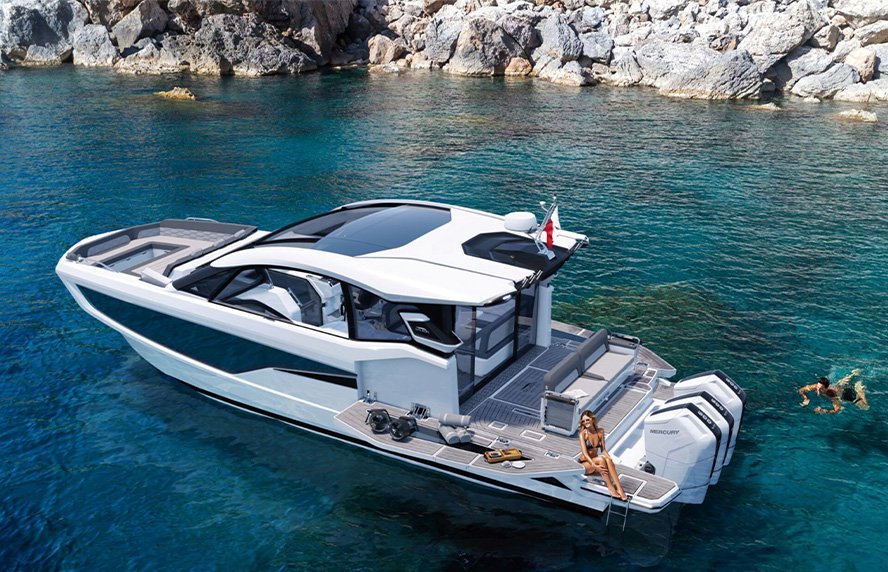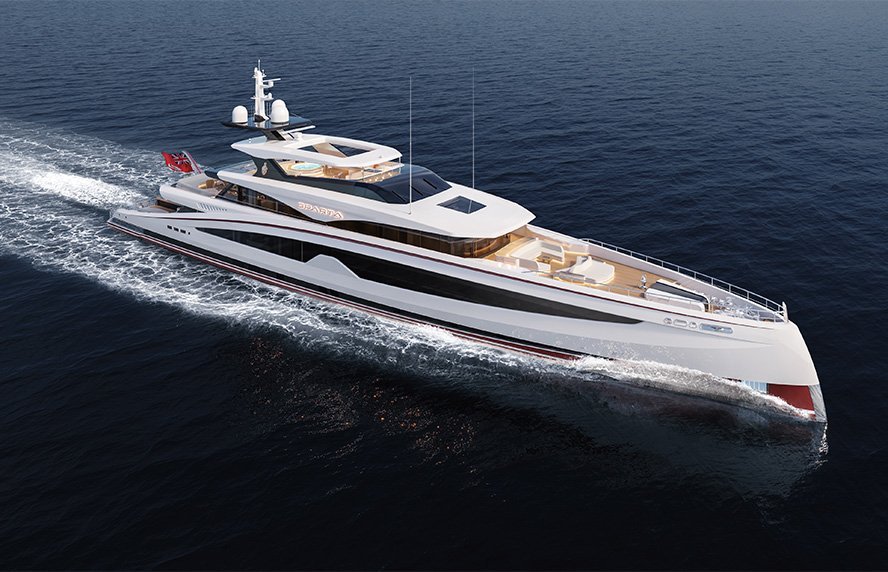
Founded in 1993, the Oito em Ponto studio is headed by Artur Miranda and Jacques Bec, both with distinct personalities, who complement each other in the realisation of building restoration and interior design projects. The perfection they demand leaves nothing to chance, and it is in the details that the value of this duo lies, having recently dismantled the interior of a country house in Saint Tropez, transforming what was insipid into a singular space, renamed Château Saint-Maur. With many national and international projects under their belt, this one, in particular, let to the creation of a book, in which moments and adventures of this house that now tells a story are recorded.
How did the invitation to renovate Château Saint-Maur come about?
We had already worked with this client at Quinta do Pessegueiro, in the Douro, where the house, on the outside, remained as it was, respecting the surroundings that are UNESCO heritage. But on the inside, we created a story, we didn’t renovate it, we did it all over again. And we also renovated another house in Saint Tropez, and we ended up becoming friends. He was buying land in that region of France, rich in vines, because in Portugal he already had the Quinta do Pessegueiro wines, and, on one of those estates there was what the French call a bastide, a typical country house with a winery and cellars.
What was this house like?
The house was at the gallows, condemned to death. The owner knew it was ugly, but he thought it had charm and wanted to renovate it. In addition to us, he asked for two other opinions. Of these two, one of them wanted to knock it down. Oito em Ponto tells the story of the recreated space, leaving the essentials, and, as storytellers, we thought it made no sense to demolish the house and proposed works that turned out to be daunting. It was a challenge. The owner liked our proposal and we took on the project.
And a gripping story began, right up to the words "the end”?
Without a doubt, the house is located on a piece of land with 160 hectares of vineyards, and there are around two hectares where the house stands, with all the facilities around it: the main house, chapel, dovecote, the places where the sheep and pigs were kept, which we transformed into a bergerie, with a swimming pool, which ended up being 30 metres long, and the pool house. We also built a discotheque and renovated all the houses that belonged to the caretakers. The winery was moved and we built another building where the Château Saint-Maur wine is produced, and the main house became the place to receive guests, whether they are friends, customers, or just connoisseurs. Wine is increasingly being sold as lifestyle, people want to experience moments.
«THE HOUSE WAS AT THE GALLOWS, CONDEMNED TO DEATH»
How long did this work take?
Between the first time we went to visit the space, until we handed it over, as a turnkey project, with decoration, candles and other treats, such as a full pantry, it took about five years. At the very beginning, the owner took some friends there, who looked at us with the most complacent air in this world and wished us luck. The house was very ugly and work had been done to it in the style of other periods and previous owners; there were rooms all over the place.
When you ripped out the inside of the house, what do you find?
When we began to excavate, we were faced with unbelievable situations. The house had no entrance, today it does; we had to shore up the entire interior, because we broke the centre of the house from top to bottom, it looked like a bomb had gone off, and there was one moment when we thought it might collapse. There was also the time when the only stucco fell off, which we wanted to keep. It was in the old winery, now it’s the summer room. That room ended up with its corners trimmed, it’s a hexagon, because it wasn’t possible any other way; after two stonemasons had spent three months trying to get rid of the vats in reinforced concrete, we realised it wouldn’t be possible, so we decided to trim the corners and that’s how it stayed. Everything there was confusing, over the years there were walls put up and others knocked down, the house became a maze, there were rooms made of bits of wood and fabric. But we did something unthinkable, we transformed the former owner’s oratory, which was in a bedroom, into the bathroom of the main bedroom, it even has a fireplace and a huge bathtub. There were many adventures and everything was part of this journey.
When you finished, what did you feel?
As with any of our projects, we went into mourning. In this house in particular, it was easy to grieve, because we are very good friends with the owner and we continue to visit it. When we finished, we looked at everything and, as always, we found faults, for us, because we are perfectionists, we always think we could do better. But on a building site there is a schedule to meet and we have to make decisions. They were exceptional moments, fun, despite the major tension. Only three months before it was finished did we have the feeling of the work accomplished.
«WE WANTED IT TO HAVE TRADITION IN THE END»
Did the name of the house already exist or was it your inspiration?
We called it Château Saint-Maur because of the wine. It wasn’t a castle, it was a big house, we wanted it to have tradition in the end, because although it was very old it was empty of history, it was insipid.
Your story with Château Saint-Maur was immortalised in a book.
We never record almost anything we do, but that work had so many adventures that we kept taking photos that we sent to a friend who showed them to Flammarion, a prestigious book publisher and so there was interest and they invited us to do a monograph. It is a book about an architecturally designed and decorated house, and it is a source of inspiration for others.
It was a milestone in your career, but there are others. Can you highlight some of them?
This work is one of the most recent. We have worked internationally, on many projects, in Angola, mainly in Luanda; São Paulo, in Brazil; Ibiza, in Spain; Paris, in France; London, in England; and we are now working in Riyadh, in Saudi Arabia. In Portugal, we have many, really, in Oporto, in Braga and Guimarães, in the Douro, in Lisbon and Cascais.
«WE ‘REINTERPRET’ THE PAST»
You make houses, which you also decorate, which tell stories, what is yours?
Jacques Bec and I are eternally curious, we are passionate about everything and fascinated by the past, because the best way to face the present is to know how to deal with the past. We ‘reinterpret’ the past. We create contemporary, unique and original situations that we add to what the places inspire us. My experience comes from fashion and design, which combined with Jacques’ French savoir-faire and his great knowledge of graphic arts, in his speciality as a designer, works very well. But above all else we like to construct stories. It’s a work of curatorship. We create unique, joyful, distinctive spaces where we play a lot with lighting to produce intimate or sparkling environments. We let our imagination flow and create spaces that will last over time.
How did the invitation to renovate Château Saint-Maur come about?
We had already worked with this client at Quinta do Pessegueiro, in the Douro, where the house, on the outside, remained as it was, respecting the surroundings that are UNESCO heritage. But on the inside, we created a story, we didn’t renovate it, we did it all over again. And we also renovated another house in Saint Tropez, and we ended up becoming friends. He was buying land in that region of France, rich in vines, because in Portugal he already had the Quinta do Pessegueiro wines, and, on one of those estates there was what the French call a bastide, a typical country house with a winery and cellars.
What was this house like?
The house was at the gallows, condemned to death. The owner knew it was ugly, but he thought it had charm and wanted to renovate it. In addition to us, he asked for two other opinions. Of these two, one of them wanted to knock it down. Oito em Ponto tells the story of the recreated space, leaving the essentials, and, as storytellers, we thought it made no sense to demolish the house and proposed works that turned out to be daunting. It was a challenge. The owner liked our proposal and we took on the project.
And a gripping story began, right up to the words "the end”?
Without a doubt, the house is located on a piece of land with 160 hectares of vineyards, and there are around two hectares where the house stands, with all the facilities around it: the main house, chapel, dovecote, the places where the sheep and pigs were kept, which we transformed into a bergerie, with a swimming pool, which ended up being 30 metres long, and the pool house. We also built a discotheque and renovated all the houses that belonged to the caretakers. The winery was moved and we built another building where the Château Saint-Maur wine is produced, and the main house became the place to receive guests, whether they are friends, customers, or just connoisseurs. Wine is increasingly being sold as lifestyle, people want to experience moments.
«THE HOUSE WAS AT THE GALLOWS, CONDEMNED TO DEATH»
How long did this work take?
Between the first time we went to visit the space, until we handed it over, as a turnkey project, with decoration, candles and other treats, such as a full pantry, it took about five years. At the very beginning, the owner took some friends there, who looked at us with the most complacent air in this world and wished us luck. The house was very ugly and work had been done to it in the style of other periods and previous owners; there were rooms all over the place.
When you ripped out the inside of the house, what do you find?
When we began to excavate, we were faced with unbelievable situations. The house had no entrance, today it does; we had to shore up the entire interior, because we broke the centre of the house from top to bottom, it looked like a bomb had gone off, and there was one moment when we thought it might collapse. There was also the time when the only stucco fell off, which we wanted to keep. It was in the old winery, now it’s the summer room. That room ended up with its corners trimmed, it’s a hexagon, because it wasn’t possible any other way; after two stonemasons had spent three months trying to get rid of the vats in reinforced concrete, we realised it wouldn’t be possible, so we decided to trim the corners and that’s how it stayed. Everything there was confusing, over the years there were walls put up and others knocked down, the house became a maze, there were rooms made of bits of wood and fabric. But we did something unthinkable, we transformed the former owner’s oratory, which was in a bedroom, into the bathroom of the main bedroom, it even has a fireplace and a huge bathtub. There were many adventures and everything was part of this journey.
When you finished, what did you feel?
As with any of our projects, we went into mourning. In this house in particular, it was easy to grieve, because we are very good friends with the owner and we continue to visit it. When we finished, we looked at everything and, as always, we found faults, for us, because we are perfectionists, we always think we could do better. But on a building site there is a schedule to meet and we have to make decisions. They were exceptional moments, fun, despite the major tension. Only three months before it was finished did we have the feeling of the work accomplished.
«WE WANTED IT TO HAVE TRADITION IN THE END»
Did the name of the house already exist or was it your inspiration?
We called it Château Saint-Maur because of the wine. It wasn’t a castle, it was a big house, we wanted it to have tradition in the end, because although it was very old it was empty of history, it was insipid.
Your story with Château Saint-Maur was immortalised in a book.
We never record almost anything we do, but that work had so many adventures that we kept taking photos that we sent to a friend who showed them to Flammarion, a prestigious book publisher and so there was interest and they invited us to do a monograph. It is a book about an architecturally designed and decorated house, and it is a source of inspiration for others.
It was a milestone in your career, but there are others. Can you highlight some of them?
This work is one of the most recent. We have worked internationally, on many projects, in Angola, mainly in Luanda; São Paulo, in Brazil; Ibiza, in Spain; Paris, in France; London, in England; and we are now working in Riyadh, in Saudi Arabia. In Portugal, we have many, really, in Oporto, in Braga and Guimarães, in the Douro, in Lisbon and Cascais.
«WE ‘REINTERPRET’ THE PAST»
You make houses, which you also decorate, which tell stories, what is yours?
Jacques Bec and I are eternally curious, we are passionate about everything and fascinated by the past, because the best way to face the present is to know how to deal with the past. We ‘reinterpret’ the past. We create contemporary, unique and original situations that we add to what the places inspire us. My experience comes from fashion and design, which combined with Jacques’ French savoir-faire and his great knowledge of graphic arts, in his speciality as a designer, works very well. But above all else we like to construct stories. It’s a work of curatorship. We create unique, joyful, distinctive spaces where we play a lot with lighting to produce intimate or sparkling environments. We let our imagination flow and create spaces that will last over time.













